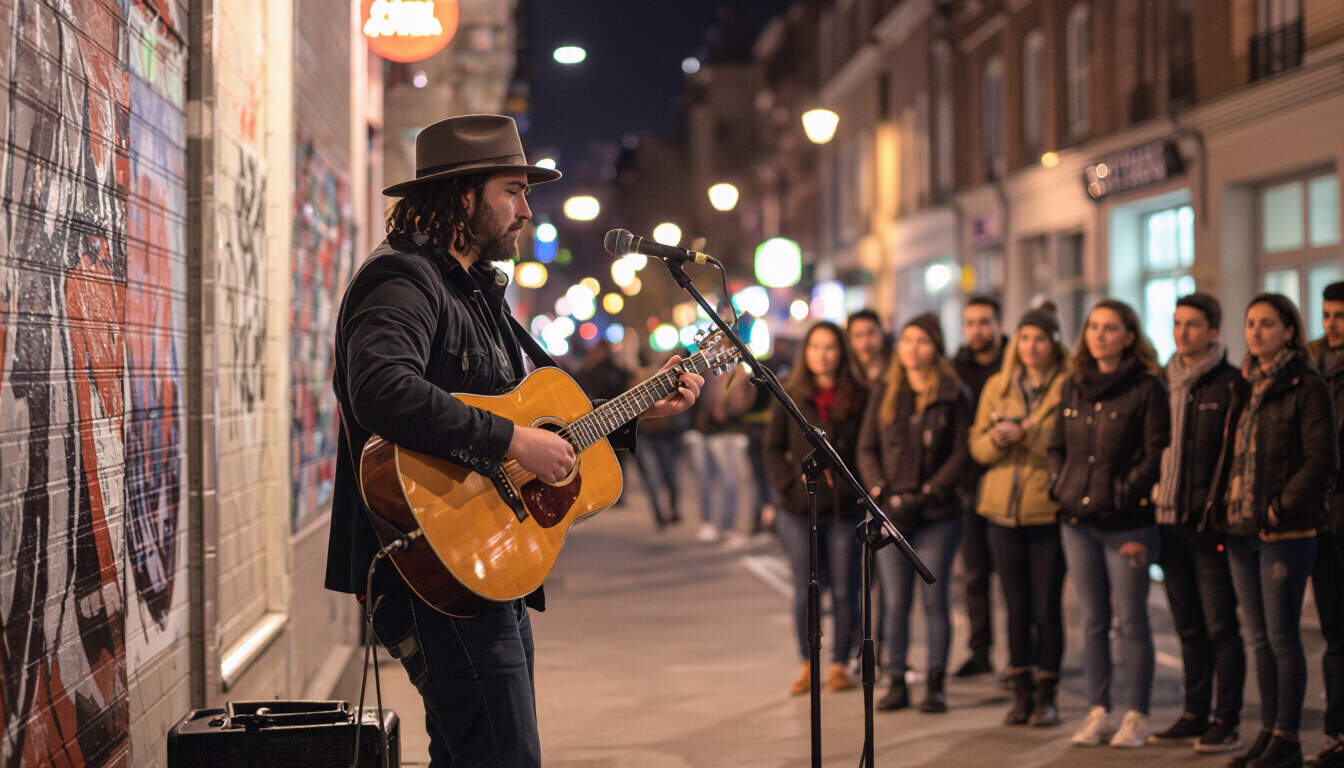Innovative Guerrilla PR Tactics for Musicians in Niche Markets
 by Thaddeus Blanda
by Thaddeus Blanda
Explore effective guerrilla PR strategies for musicians targeting niche audiences. This article covers creative, low-cost methods like street performances and social media stunts to build brand visibility and connect with fans, ideal for small-scale artists and entrepreneurs.

Guerrilla PR offers a fresh approach for musicians in niche markets, allowing them to stand out with creativity and minimal resources. For instance, musicians can use unexpected events to capture attention and foster loyalty among dedicated fans.
One effective tactic involves organizing pop-up performances in local spots. These surprise shows create buzz and draw in passersby, turning everyday locations into stages for promotion. By choosing venues that align with their genre, artists build immediate connections and generate word-of-mouth sharing.
Social media plays a key role in amplifying these efforts. Guerrilla PR tactics here include viral challenges that encourage user participation, such as fans recreating a song's lyrics in unique ways. This method helps niche markets expand reach organically, as content spreads quickly through shares and tags.
Another strategy is partnering with local influencers who share similar audiences. For example, a folk musician might collaborate with a community blogger to co-host events, blending their followings for mutual benefit. Such alliances provide exposure without high costs, making them accessible for emerging talents.
Building a Community Through Events
Hosting interactive workshops or jam sessions can deepen engagement. These gatherings allow musicians to showcase their work while involving attendees, creating a sense of belonging. In practice, an electronic artist might set up a free demo session at a coffee shop, attracting potential supporters and sparking ongoing conversations.
To measure success, track attendance and online interactions from these events. Simple tools like polls or feedback forms offer insights into what resonates, helping refine future plans. This data-driven approach ensures efforts remain focused and effective for long-term growth.
Leveraging user-generated content is another smart move. Encourage fans to post their experiences with your music, using specific hashtags to create a collective narrative. For indie rock bands, this could mean fans sharing concert photos, which then form a visual story that attracts new listeners.
Overcoming Common Challenges
Many artists face budget constraints, but guerrilla PR thrives on ingenuity. For example, distributing branded merchandise at public gatherings provides tangible reminders of your brand. A jazz performer might hand out custom stickers during a park event, turning recipients into walking advertisements.
Adapting to different niche environments is crucial. In urban settings, street art integrations—such as painting murals with song themes—can draw eyes and spark curiosity. For rural areas, mobile tours visiting small towns offer personalized interactions that build lasting relationships.
Real-world examples highlight the impact. A blues musician once used themed flash mobs in city centers, leading to viral videos and increased streaming numbers. These stories show how creativity drives visibility, even for those starting small.
In conclusion, applying these tactics requires persistence and adaptation. By focusing on authentic connections and innovative actions, musicians in niche markets can achieve meaningful progress. The key lies in consistent effort and learning from each campaign, paving the way for sustained success.
To implement this, start with a simple plan: identify your core audience, choose one tactic, and execute it thoughtfully. Over time, these steps can transform your presence and open new opportunities in competitive spaces.
